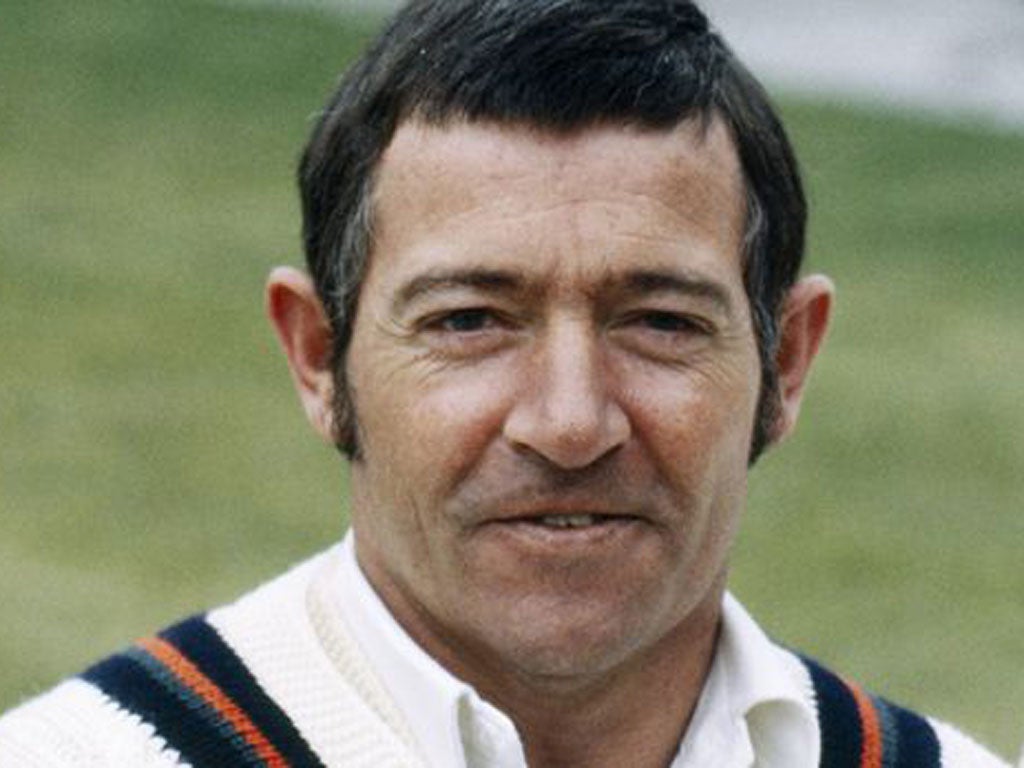Harry Pilling: Stalwart batsman for Lancashire

One of the great characters of cricket's modern era, Harry Pilling served Lancashire with unswerving devotion for more than a quarter of a century. An unsung hero of the county's glory days during the 1960s and '70s, as the smallest player in the first class game at only 5ft 3in tall he was instantly recognised throughout cricket.
When he joined the Old Trafford staff straight from school as a 16-year-old in 1959, the county was fast approaching its lowest ebb, but the arrival of the overseas stars, Farokh Engineer and Clive Lloyd, together with the astute appointment as captain of Jack Bond, helped hasten a revival. Soon, not only did the team display far greater consistency in the County Championship but proceeded to triumph in three successive Gillette Cup finals at Lord's (1970-72). In 1969 and 1970, they also won the new John Player Sunday League.
Flourishing despite the chaos around him, Pilling, with his precocious batting talents, soon made the Lancashire No 3 spot his own. A compact and stylish right-handed batsman, he rapidly acquired a reputation as a fearless batsman with an unerring ability to whip the ball off his stumps wide of mid-on. Anything short of a length was dealt with by an increasingly familiar square cut. For a man of modest stature he hit the ball remarkably hard.
He made his first class debut against Sussex at Old Trafford in August 1962, the first of his 25 centuries coming against Hampshire at Portsmouth the following year. Capped in 1965, he topped the Lancashire batting averages that season for the first time In 1968, he was the only Lancashire batsman to reach 1,000 runs, a target he comfortably passed seven times in eight years.
Pilling's impact must also be measured by his success in the one-day game. The first player to 1,000 runs in the John Player League competition, in 1969 he topped 50 on five occasions. He also played in 34 Gillette Cup matches and 33 Benson and Hedges matches, scoring close to 1,500 runs. A consistent performer in Lancashire's run of Gillette Cup wins at Lord's, in the first of these against Sussex in 1970, his 70 not out in a total of 185 won him the man-of-the-match award.
Alongside the team's 6ft 5in tall West Indian star, Clive Lloyd, Pilling enjoyed many profitable and riotous partnerships. Against Somerset in the John Player League, together they plundered an immense 182 runs, while against Kent at Dartford in the Championship in 1970, they put on 231 for the third wicket. Not to be outdone, in successive matches at Old Trafford, Pilling himself made 109 not out and 69 against Gloucestershire, closely followed by 109 not out and 104 not out against Warwickshire. He was desperately unlucky to miss out on a coveted trip to Australia; his winter months were invariably spent selling coffins or making fibreglass mouldings.
In 1972 he completed 10,000 first class runs, topping 50 or more in nine consecutive matches. With David Lloyd he shared an unbroken second-wicket stand of 234 against Nottinghamshire at Old Trafford. Against Somerset at Weston-super-Mare, in what was probably one of his finest ever innings, he contributed 118 out of Lancashire's first-innings total of 196.
A successful benefit in 1974 was followed by a somewhat lean 1975, but the following year saw him back at his imperious best. Then, amid renewed talk of possible representative honours, his total of 1,569 runs included his highest championship score, 149 not out against Glamorgan at Liverpool. In 1977 came his only appearance as Lancashire captain, against Northants at Wantage Road, when he led a successful rearguard action to earn a creditable draw.
Between 1962 and 1980 Pilling made 333 appearances for Lancashire, scoring 15,279 runs at an average of 37.23. An occasional off-spin bowler, he proudly claimed one wicket in first class cricket, that of Somerset's Peter Robinson, caught Wood, bowled Pilling. Never less than a wholehearted and committed team player, this most modest of men also had 89 catches to his name.
Successfully stepping down to captain the Second XI, he later became cricket manager at nearby Bowlers Sports, Leisure and Exhibition Centre run by his former team-mate Jack Simmons. A return to manufacturing fibreglass mouldings brought his rich life full circle.
Join our commenting forum
Join thought-provoking conversations, follow other Independent readers and see their replies
Comments